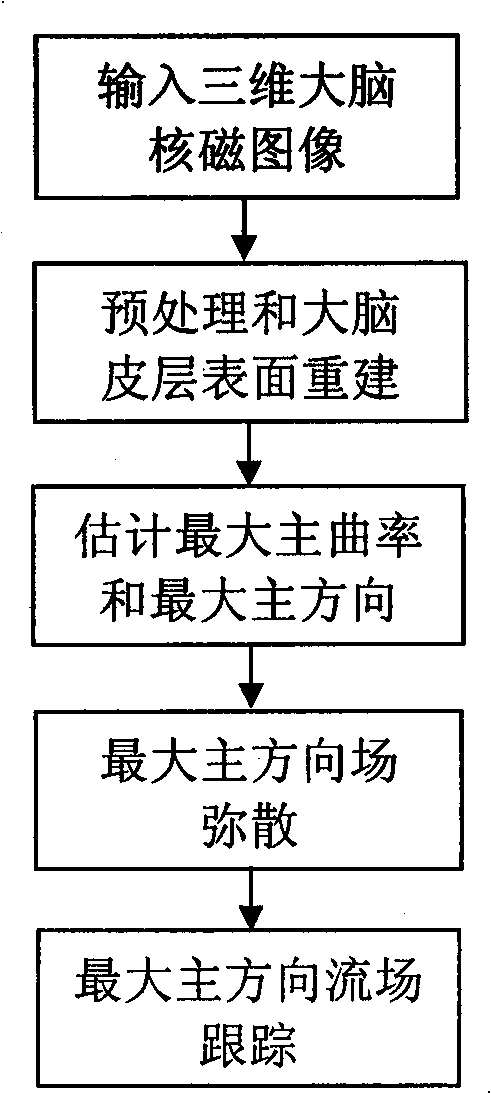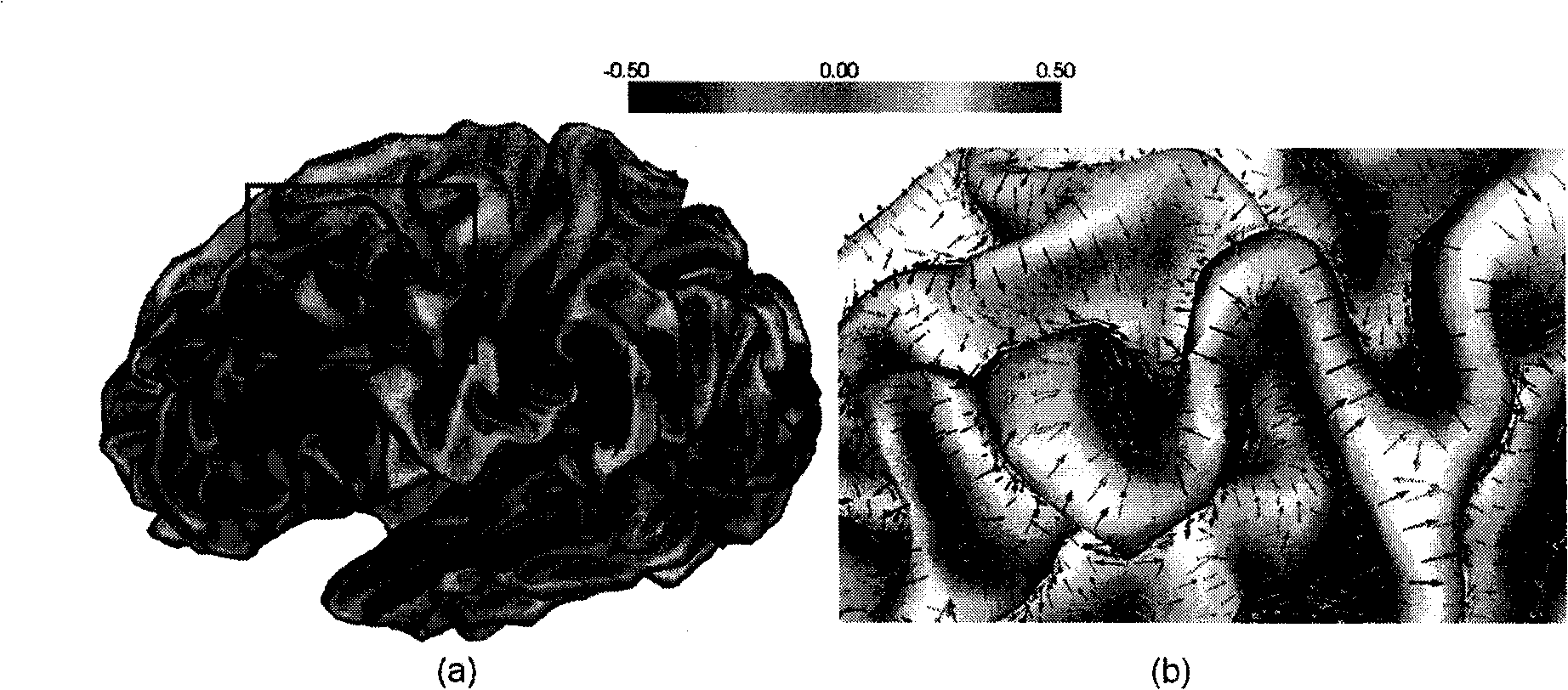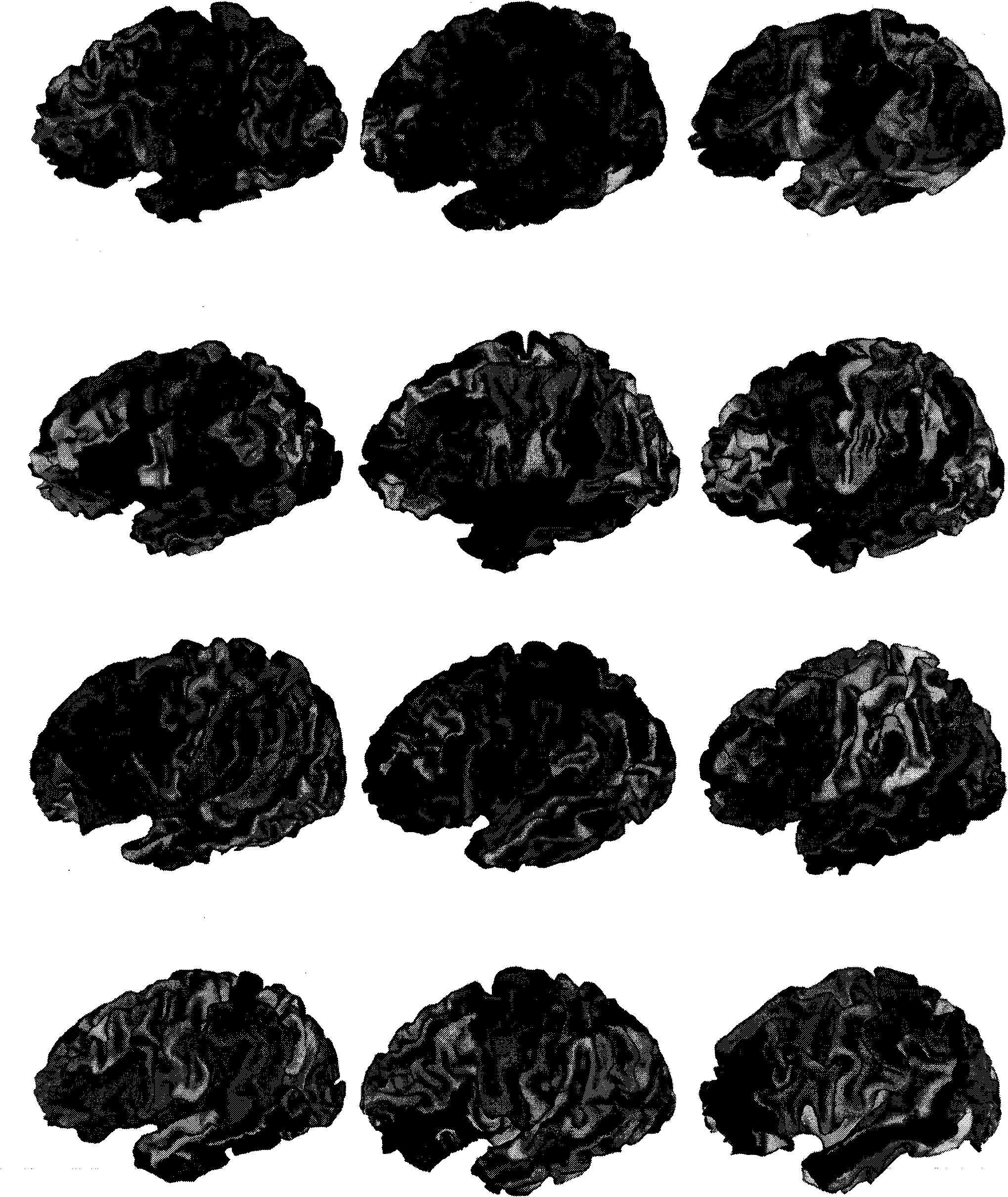Method for segmenting sulus basins on surface of pallium of a three-dimensional cerebral magnetic resonance image
A magnetic resonance image and nuclear magnetic resonance image technology, applied in the field of medical image processing, can solve problems such as over-segmentation, inaccurate boundaries of sulci and basins, and difficult parameter control.
- Summary
- Abstract
- Description
- Claims
- Application Information
AI Technical Summary
Problems solved by technology
Method used
Image
Examples
Embodiment Construction
[0030] Now in conjunction with embodiment, accompanying drawing, the present invention will be further described:
[0031] Firstly, the three-dimensional brain magnetic resonance images are preprocessed and the surface of the cerebral cortex is reconstructed: including removing the skull and non-brain tissues, and performing brain tissue segmentation on the brain image (segmented into three types of white matter, gray matter, and cerebrospinal fluid), and after tissue segmentation Reconstructing the geometry in the brain image results in an accurate, topologically correct cortical surface represented by a series of vertices and triangles. Then, the maximum principal curvature and maximum principal direction of vertices on the surface of the cortex are estimated. Next, by minimizing an energy function, the maximum principal direction field is diffused on the surface of the cerebral cortex to generate a smooth tangential maximum principal direction flow field. Finally, accordin...
PUM
 Login to View More
Login to View More Abstract
Description
Claims
Application Information
 Login to View More
Login to View More - R&D
- Intellectual Property
- Life Sciences
- Materials
- Tech Scout
- Unparalleled Data Quality
- Higher Quality Content
- 60% Fewer Hallucinations
Browse by: Latest US Patents, China's latest patents, Technical Efficacy Thesaurus, Application Domain, Technology Topic, Popular Technical Reports.
© 2025 PatSnap. All rights reserved.Legal|Privacy policy|Modern Slavery Act Transparency Statement|Sitemap|About US| Contact US: help@patsnap.com



